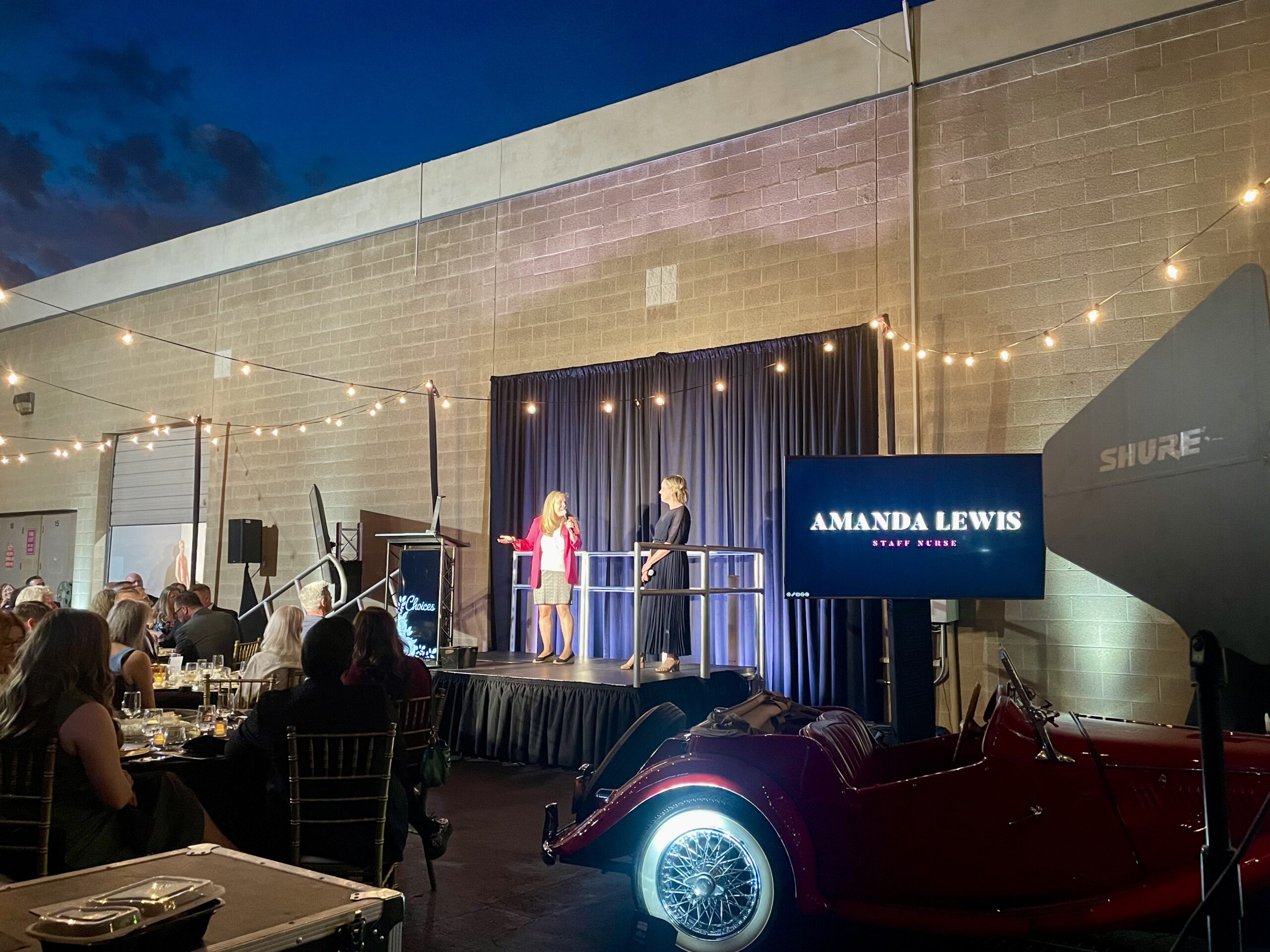
Whether you routinely use event stages or if you are considering using one for the first time, designing a great stage system can really make or break your event. If the speaker is too far away and the people in the back can’t hear, then you’ll hear complaints no matter how great the actual presentation or performance was.
However, a well-done stage with the right effects can really complement your event and give your guests that extra wow-factor. The best part is: you have a lot of options when it comes to stage types and special effects, so meeting your budget is more doable than you might think.
Here are our Top 5 Stage Types to Use at Your Next Event:
- The Platform Stage
- Center Performance Stage
- The Traditional or Ceremonial Stage
- The Outdoor Stage
- The Runway Stage
1. The Platform Stage
We’ve seen so many ways to use a small, platform stage. At a smaller event, it can act as your center stage for your main speaker or performer, and at a larger event, you can add multiple platform stages as centerpieces around the room. Regardless of who or what is displayed, the stage acts as a natural barrier from your guests, allowing everyone to see without the crowd.
When not to use: If you are holding one main event with 100+ people or if you’d like to give your main speaker or performer more room to roam, you may want to use a larger stage instead.
2. Center Performance Stage
One of the great things about a Center Performance stage is that you can configure the stage to be in the center of your event space, or you can add a stage backdrop to orient your guests in a certain direction.
Either way, a performance stage is usually quite flexible when it comes to lighting, microphones, music, special effects, and can accustom many different backdrops (i.e projector screens, TV monitors).
When not to use: Typically smaller, more intimate events don’t need a large performance stage.
3. The Traditional or Ceremonial Stage
This is typically used in most corporate events, graduation ceremonies, awards ceremonies, and so much more. For the best set up, you’ll want professional sound equipment, microphones, chairs, a podium, and the right backdrop to make anyone stepping on that stage look and sound great.
When not to use: Typically, if you are hosting a big performance where you need more space, a traditional stage may not have the stage depth you require, but in most cases your extra stage needs can be met with an additional configuration.
4. The Outdoor Stage
Planning a large outdoor event? The Outdoor Stage is a match made in heaven. This stage configuration is ready to meet all your lighting and sound needs no matter where your outdoor event is taking place. Your performers or speakers will also appreciate the roof to protect them from a hot sun and wind resistant barriers to keep their papers or equipment from falling.
When not to use: This stage is typically an outdoor-only stage.
5. The Runway Stage
If you are putting on a fashion show or entertainment event, you’ll most likely get great use from a runway stage. This elevated stage let’s everyone see what they came for and integrates easily with other stage types, so you can create your ultimate configuration.
When not to use: Some event activities require more space, and you may want to use a larger stage to accommodate that.
To see all available stage types at centric events, go here.
